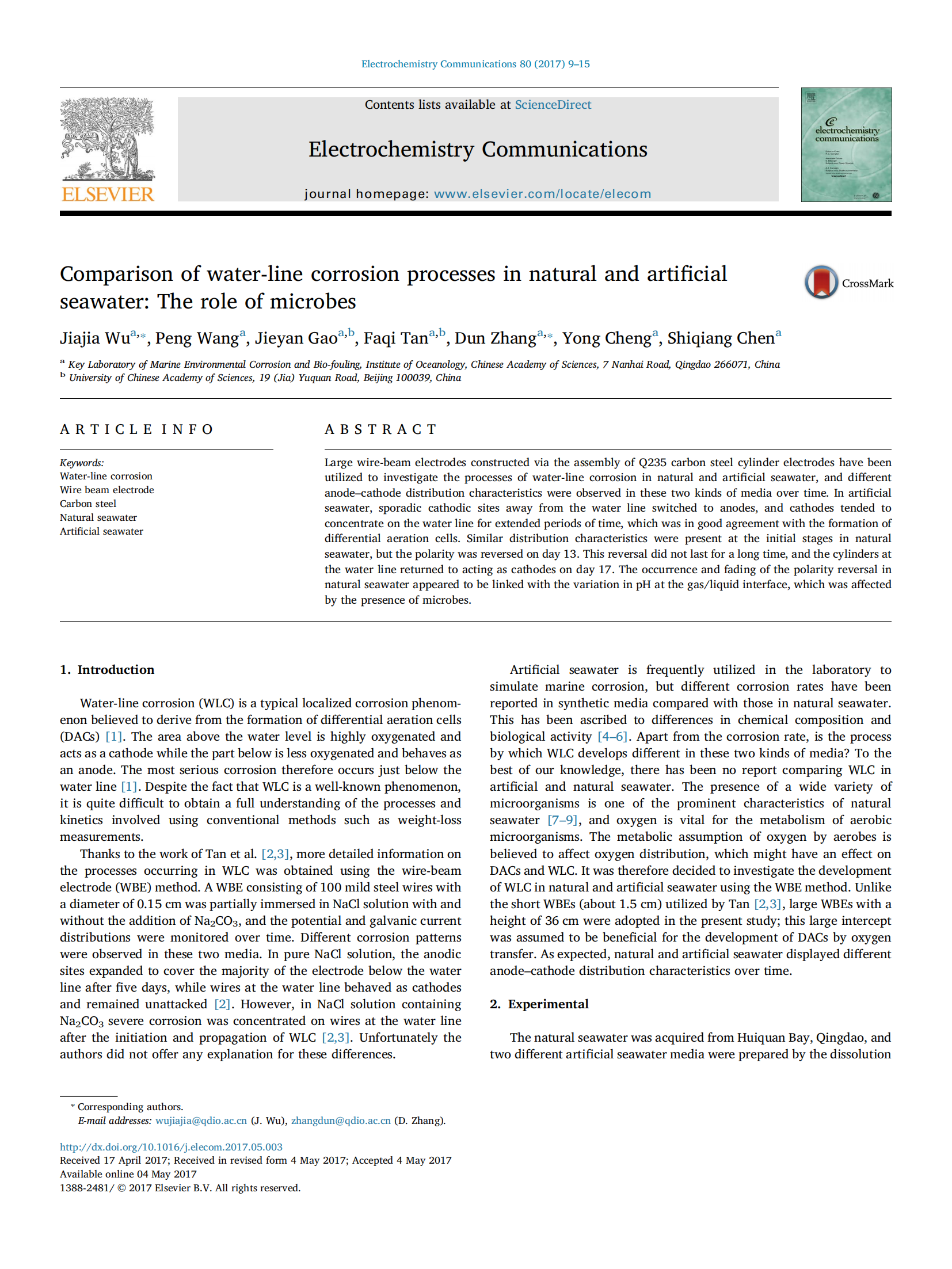Large wire-beam electrodes constructed via the assembly of Q235 carbon steel cylinder electrodes have been utilized to investigate the processes of water-line corrosion in natural and artificial seawater, and different anode–cathode distribution characteristics were observed in these two kinds of media over time. In artificial seawater, sporadic cathodic sites away from the water line switched to anodes, and cathodes tended to concentrate on the water line for extended periods of time, which was in good agreement with the formation of differential aeration cells. Similar distribution characteristics were present at the initial stages in natural seawater, but the polarity was reversed on day 13. This reversal did not last for a long time, and the cylinders at the water line returned to acting as cathodes on day 17. The occurrence and fading of the polarity reversal in natural seawater appeared to be linked with the variation in pH at the gas/liquid interface, which was affected by the presence of microbes.
